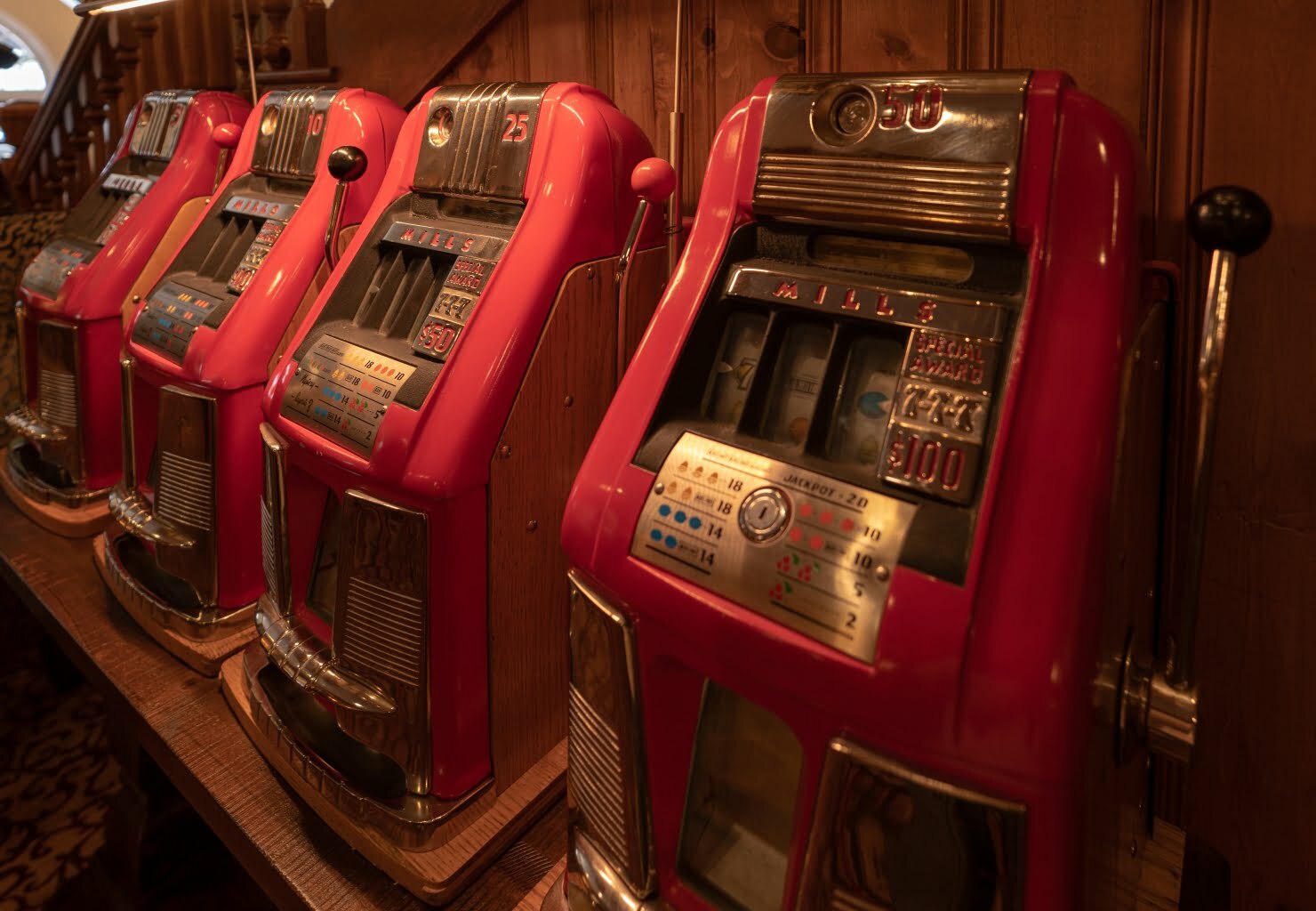Welcome to the magical world of online slots! You might have heard the terms “low volatility slots” and “high volatility slots” thrown around if you’re new to this game. But what do these words even mean? And how do they affect your gameplay experience? Don’t worry; we’re here to explain everything to you in the most simple and fun way possible!
What is Game Volatility?
Game volatility is the level of risk and reward associated with a particular game. Simply put, it’s how often and how much a game pays out. There are three levels of game volatility: low, medium, and high.
Low-volatility games offer more frequent payouts, but the payouts are relatively small. These games are ideal for players who prefer a more relaxed and steady gaming experience. Medium volatility games balance frequent small payouts and the chance of winning larger sums. High-volatility games, on the other hand, have the potential to offer large payouts but are less likely to do so. These games are ideal for players who enjoy taking risks and seeking a bigger win.
The “standard deviation” of the game’s payouts is used to measure volatility. High-volatility games will have a high standard deviation, while low-volatility games will have a low standard deviation.
Understanding game volatility benefits gamblers looking to enhance their chances of winning. For instance, a player looking to win smaller amounts should choose low-volatility games, while those looking for bigger payouts can opt for high-volatility games. Understanding game volatility will help you make informed decisions about how much to bet and when to bet, increasing the overall chances of success.
What are Low Volatility Slots?
Imagine you’re playing a game of hide-and-seek with your friends. When you’re the seeker, you want to find your friends as quickly as possible, right? That’s kind of what low volatility slots are like – they give you small and frequent payouts, so you don’t have to wait too long to win something.
You’re playing a low volatility slot with a $1 bet. You spin the reels and get a winning combination that pays $0.50. That means you’ve won half of your bet back. If you keep playing, you might get another win soon, maybe $0.20. Your wins are small, but they keep you going.
Low volatility slots are great for players who don’t want to risk too much money and enjoy getting small rewards often. These games are usually recommended for beginners, as they’re easy to understand and don’t require a lot of strategy.
Examples of Low Volatility games from Blockspin Gaming
Vegas Classic is a low-volatility slot game with free spins and 25 paylines. If you are a fan of slot games set in a Vegas theme, then Vegas Classic is right for you. It’s easy to win with this game and the free spins keep you going for hours.
The Big Five also offers free spins and 25 paylines. it’s an exciting low volatility game with frequent wins and multiple free spins. It’s the best game to start with if you are a beginner.
What are High Volatility Slots?
Now, let’s go back to our hide-and-seek game. You want to stay hidden for as long as possible when you’re hiding, right? That’s what high volatility slots are like – they give you big and rare payouts, so you have to wait a bit longer to win something, but when you do win, it’s usually a lot of money.
You’re playing a high volatility slot with a $1 bet. You spin the reels, and you don’t win anything for a few rounds. But then, on your fifth spin, you get a winning combination that pays out $50! That’s a huge reward and makes up for all the money you’ve lost.
High volatility slots are great for players willing to take risks and wait for big rewards. These games are usually recommended for experienced players, requiring more patience and a deeper understanding of the game mechanics.
Examples of High Volatility Games from Blockspin Gaming
Cleopatra is a high-volatility game with 15 paylines, expanding wilds, and free spins. However, the free spin sessions come with a threshold. The wild multiplier makes it easier to win.
Surfin’ California is a progressive slot with bonus games. It’s a high-volatility game with 30 paylines offering lots of opportunities to win.
Why Does Volatility Matter?
Well, it matters because it affects your gameplay experience in different ways. If you’re playing a low volatility slot, you’re more likely to get small rewards often but less likely to win big. This is good if you’re on a budget and want to make your money last longer. However, if you’re looking for a big win, you might want to switch to a high-volatility slot.
On the other hand, if you’re playing a high volatility slot, you’re less likely to get small rewards often, but you’re more likely to win big. This can be good if you’re willing to take risks and wait for the big payout. However, if you’re on a budget, you might want to stick to a low volatility slot.
The volatility of a slot doesn’t affect your chances of winning. Every slot game has a predetermined payout percentage, which means that over time, the game will pay out a certain amount of money to players. However, the volatility affects how often and how much you’ll win in the short term.
How do You Tell the Volatility of a Slot machine?
Looking to gauge the volatility of a slot machine? Here are a few ideas:
Take a Spin: One way to understand a slot machine’s volatility is to play it! Set aside a specific amount of money to play and see how long it lasts. If you get a lot of small payouts, the game is likely low volatility, while if you go a long time without any wins and then get a big one, it’s probably high volatility.
Check the Graphics: Often, a slot machine’s graphics and animations can give you a clue about its volatility. If the game features many flashy graphics, fast-paced music, and big animations, it’s likely high volatility. If it’s more understated with simpler graphics and a calm soundtrack, it’s probably low volatility.
Look at the jackpot size: If the game features a huge jackpot, it will likely pay infrequently. However, other factors such as bonus prizes, Megaways, random features, and cascading reels also affect the game’s volatility. A game that offers these features tends to be more volatile, even if it does not have a large jackpot size.
Look at the bonuses it offers: A high presence of bonuses usually means a high volatility rating. However, the frequency and size of the bonuses also differ, affecting the game’s volatility. If a game offers a bonus for every hundred spins, it will likely have smaller volatility. On the other hand, bonuses paid out on every five hundred spins tend to be much higher, indicating a more volatile game.
How to Find Low-Volatility Slot Machines
If you prefer a more consistent stream of smaller payouts, then low-volatility slot machines might be your game of choice. But how do you find them? Here are a few tips:
- Slots with a low top prize: One way to gauge the volatility of a slot machine is to look at the size of its top prize. Generally, the smaller the top prize, the lower the volatility.
- Check the game’s RTP: RTP, or return to player, is the percentage of all money that’s returned to players over time. Low volatility slots typically have a higher RTP, as they pay out more often. You can usually find the RTP percentage in the game’s help screen or by doing a quick online search.
- Look for low-variance games: Some casinos will categorize their slot machines by variance or volatility, making it easier to find low-volatility machines. Low-variance games are another way to describe low-volatility slots.
How to Choose the Right Volatility for You
It depends on your personal preferences and goals. Here are some things to consider:
Budget: Low-volatility slots are a good choice if you are on a budget. However, if you’re willing to take risks and want the chance to win big, high volatility slots might be more your style.
Patience: If you don’t mind waiting for big rewards, high-volatility slots might be a good choice for you. However, low-volatility slots are the way to go if you want to get small rewards often to keep you going.
Experience: Low volatility slots work better for beginners. Jaws. They’re easier to understand and don’t require a lot of strategy. However, if you’re an experienced player who understands the game mechanics and is willing to take risks, high-volatility slots will work for you.
Entertainment Value: Ultimately, you should choose a slot game that you find entertaining and enjoyable. Whether you prefer low or high-volatility slots, make sure your chosen game is fun and engaging.
Conclusion
So, there, you have everything you need to know about game volatility. Remember, the volatility of a slot game affects how often and how much you’ll win in the short term, but it doesn’t affect your chances of winning in the long run. When choosing a slot game, consider your budget, patience, experience, and entertainment value, and choose the one that’s right for you. Good luck, and happy spinning!




